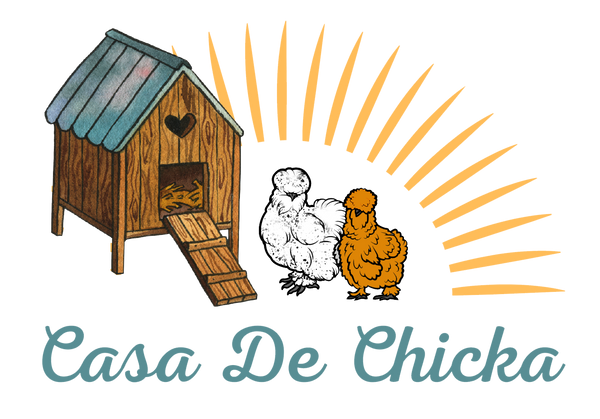Imagine a world where chickens outnumber humans. Sounds like the plot of an animated movie, right? Well, in reality, with billions of chickens being farmed globally, this isn't far from the truth. Mass chicken farming has become a colossal part of our food system, but it comes with a peck of environmental implications. Let’s embark on a journey to uncover the environmental cost of mass chicken farming – it’s not all just clucks and eggs.
The Cluckprint of Chicken Farming
A Flock of Facts: The Scale of Chicken Farming
The global demand for chicken, both meat and eggs, has led to a staggering increase in the number of chickens raised on farms. This boom has transformed chicken farming into a large-scale, industrial operation.
Feathers Everywhere: With the rise in chicken farming, chickens are now one of the most numerous domestic animals on the planet. That’s a lot of feathers and beaks to think about!
The Environmental Pecking Order
Feed: The Appetite of an Industry
Grain Gluttony: Mass chicken farming requires tons of feed, primarily grains like corn and soy. The production of these grains consumes vast amounts of water, land, and energy, and often involves heavy use of fertilizers and pesticides.
The Soy Story: Soy production, a major component of chicken feed, is linked to deforestation, particularly in South America. Clearing forests for soy cultivation disrupts ecosystems and contributes to greenhouse gas emissions.
Waste: More Than Just a Smelly Problem
Manure Management: The sheer volume of waste produced by millions of chickens is a significant environmental challenge. Improper disposal or management of chicken manure can lead to water and soil pollution.
Nitrogen and Phosphorus: Chicken manure is high in nitrogen and phosphorus. While these are great for fertilizing soil in moderation, in excess, they can cause nutrient pollution in water bodies, leading to issues like algal blooms.
Feathered Footprints: Greenhouse Gas Emissions
Methane and More
Not Just Cow Talk: While cows usually get the spotlight for greenhouse gas emissions, chicken farming also contributes its share. The decomposition of chicken waste produces methane, a potent greenhouse gas.
Energy Consumption: Large-scale chicken farms require significant energy for heating, cooling, and ventilation, further contributing to carbon emissions.
Beyond the Farm: The Lifecycle Impact
When we talk about the lifecycle impact of mass chicken farming, we're looking at the journey from egg to plate and everything in between. It's a complex ballet of production, consumption, and, unfortunately, environmental impact. Let's spread our wings and delve deeper into each stage of a chicken's life and how it impacts our planet.
From Hatch to Dispatch: The Chicken Lifecycle
Hatching a Plan: It all starts in the hatchery. Industrial incubators replace mother hens to hatch thousands of eggs. This process demands considerable energy for temperature and humidity control.
Growing Up Fast: Once hatched, chicks are rapidly grown to market size, often in climate-controlled environments. This rapid growth requires high-protein feed, contributing to the high demand for grain and soy cultivation.
Feed: The Core of the Lifecycle
A Diet That Weighs Heavy: The feed given to chickens in industrial farming is calorie-dense and designed for rapid growth. Producing this feed is resource-intensive, involving large-scale agriculture with significant water, land, and fertilizer use.
Transporting the Grains: Getting the feed to the chickens involves transportation, often over long distances. This adds to the carbon footprint through fuel consumption and emissions.
The Resource Footprint of Production Facilities
Energy Usage: Large chicken farms and processing facilities consume vast amounts of energy. Lighting, heating, cooling, and operating machinery for feeding and egg collection all add up to a significant energy demand.
Water Consumption: Water is not just for drinking; it's also used in cleaning and processing facilities. The water footprint of chicken farming extends beyond the birds' consumption to include cleaning and processing operations.
Waste: A Challenge at Every Step
Dealing with Droppings: The waste produced by millions of chickens is a significant environmental challenge. Improper disposal can lead to water and soil pollution, while effective waste management can be resource-intensive.
Processing Waste: Slaughtering and processing chickens also generate waste, including feathers, offal, and blood. Managing this waste without harming the environment is another hurdle.
The Journey to the Consumer
Food Miles: Once processed, chicken products are packaged, stored, and transported to retail outlets. This journey, often spanning great distances, involves refrigerated transportation, adding to energy use and emissions.
Packaging and Preservation: Packaging materials and the energy used for refrigeration during storage and transport further contribute to the environmental impact.
The Bigger Picture: A Chain of Environmental Impact
Cumulative Effect: Every stage of a chicken's life in industrial farming contributes to the overall environmental impact. From the hatchery to the dinner table, energy is consumed, waste is generated, and resources are used.
The Role of Consumers: Consumer demand influences production practices. A shift towards more sustainable choices, like free-range or organic chicken, can drive changes in the industry towards more eco-friendly practices.
Mass chicken farming, like any large-scale agricultural operation, comes with its set of environmental challenges. While chickens might not have the same carbon hoofprint as cows, their cluckprint is significant in other ways, from resource consumption to waste management. However, the silver lining lies in the ongoing efforts to make chicken farming more sustainable and eco-friendly. As consumers, being aware of these environmental costs allows us to make more informed choices, whether it’s opting for sustainably farmed chicken or reducing our overall consumption. So, next time you’re enjoying a chicken sandwich, spare a thought for the environmental tale behind every tender, juicy bite. 🐔🌍💚

